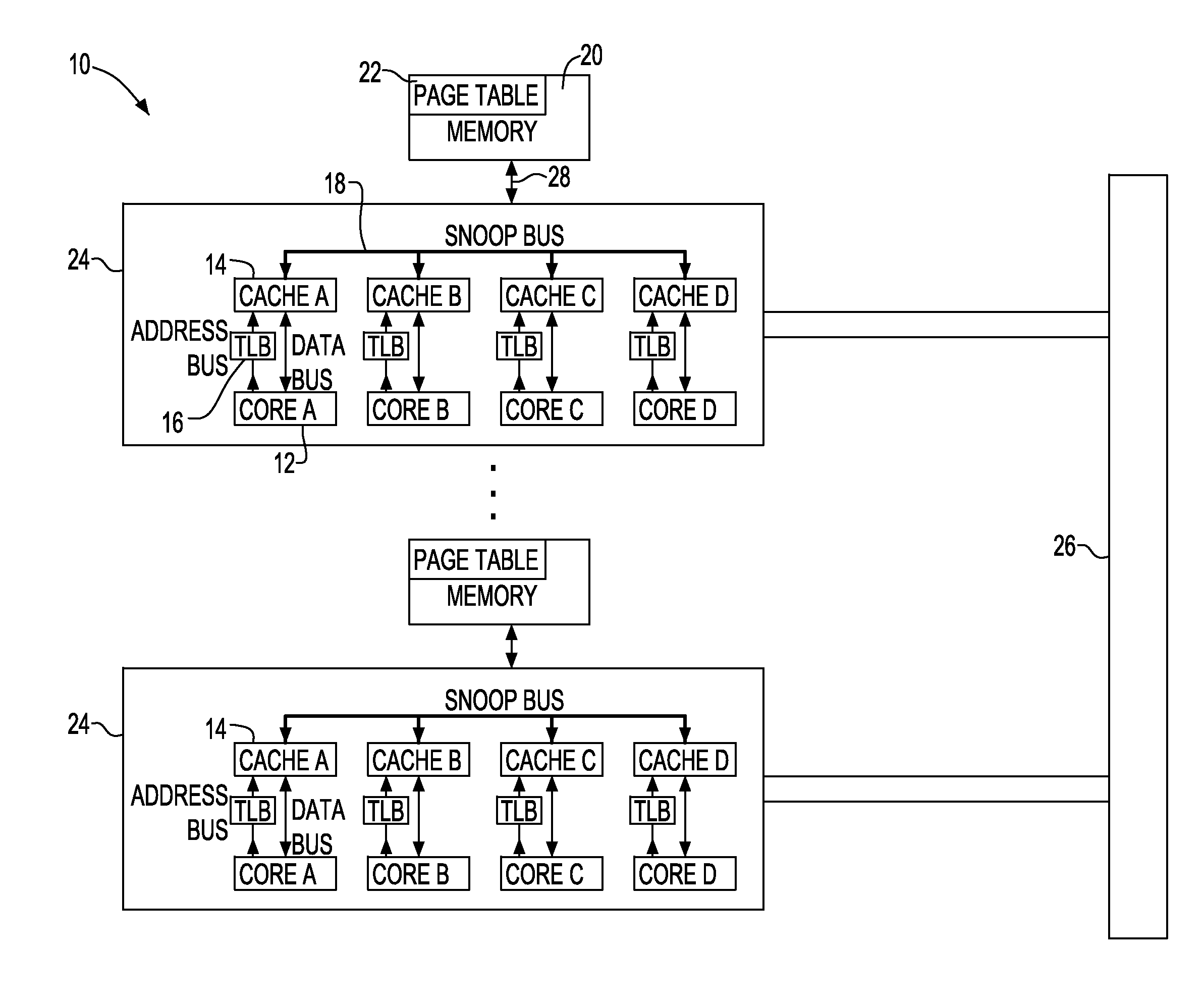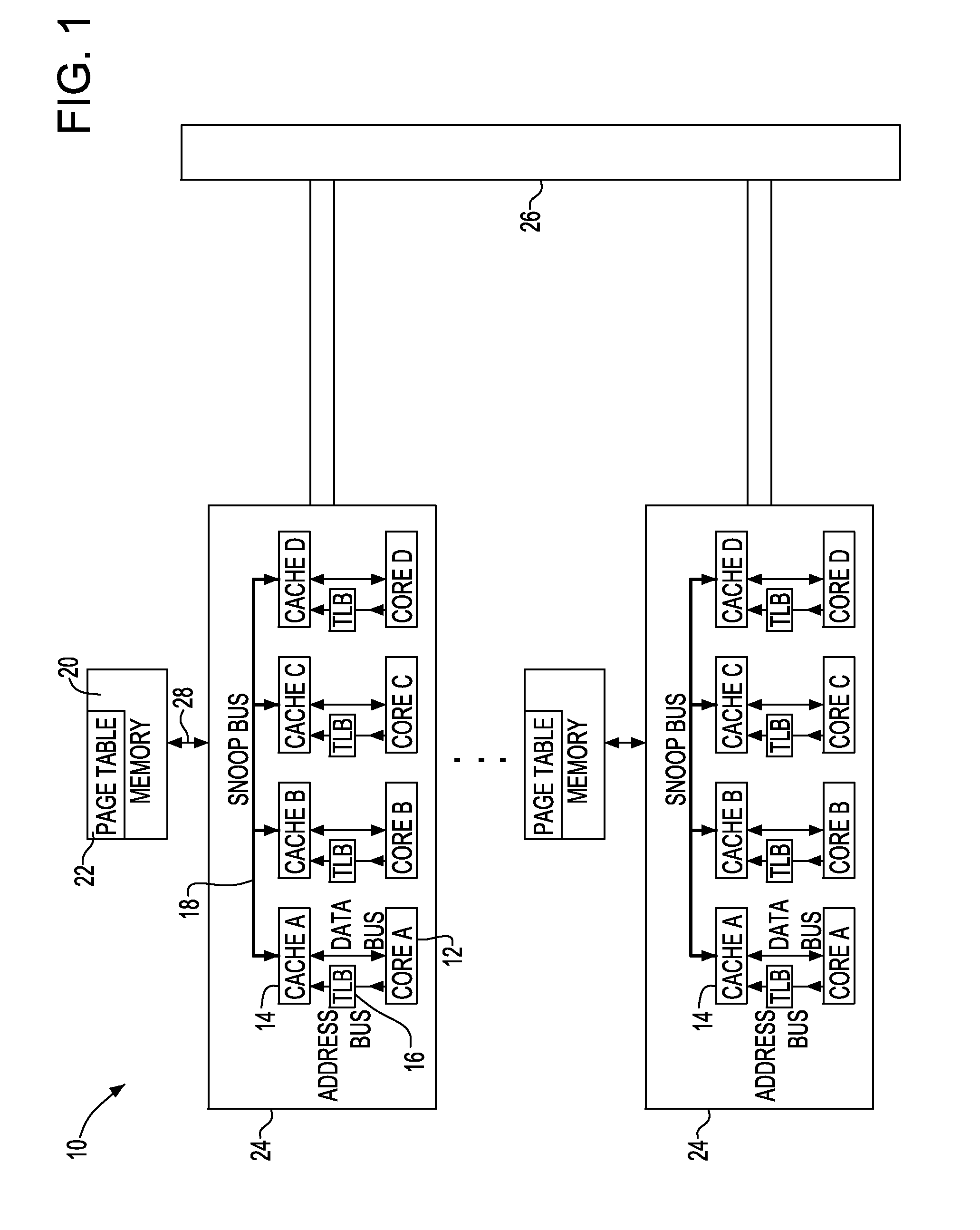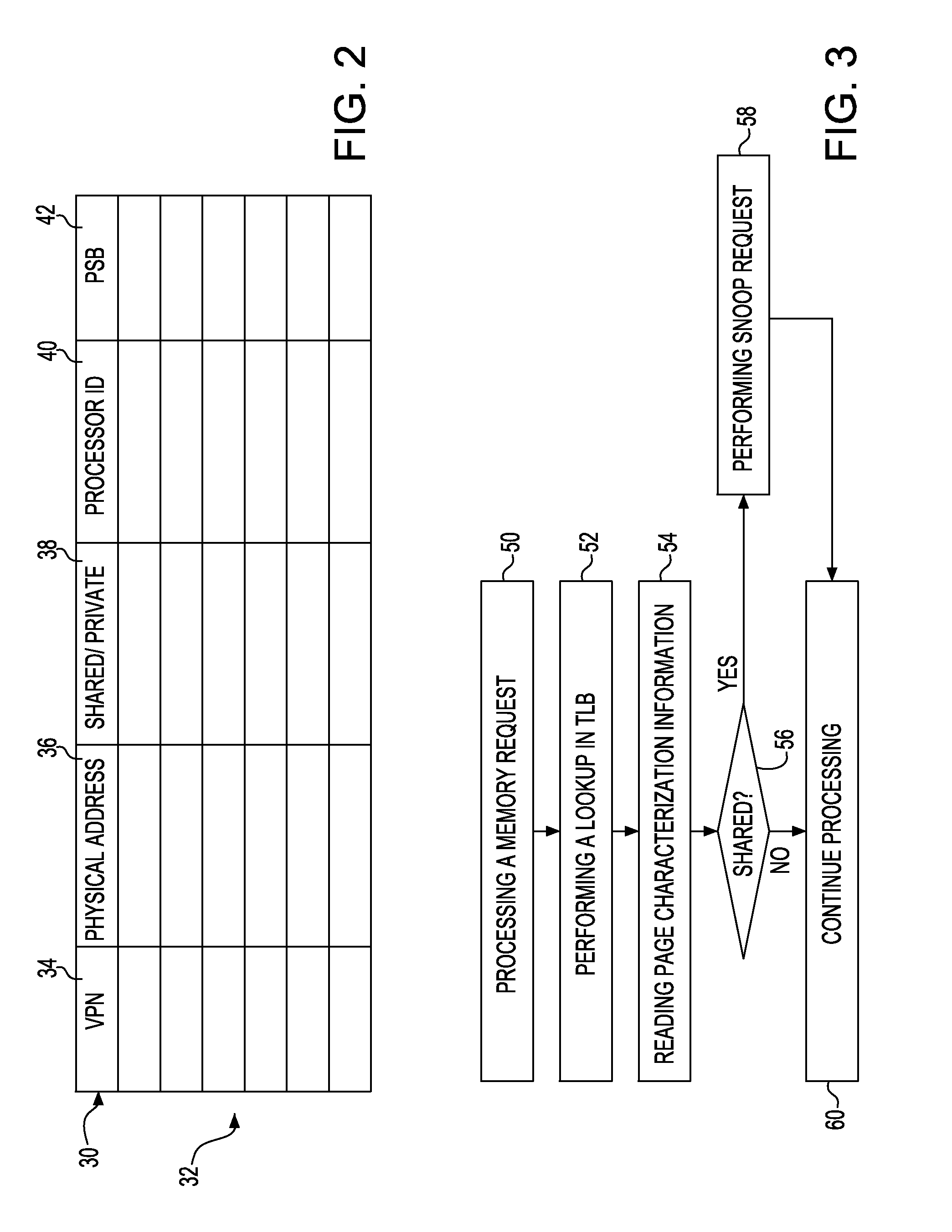Reducing broadcasts in multiprocessors
a multi-processor and broadcast message technology, applied in the field of reducing broadcast messages in multi-processor systems, can solve the problems that the traffic generated to maintain cache coherence consumes a significant portion of on-chip and off-chip bandwidth and power, and achieve the effect of reducing broadcast messages in multi-processors
- Summary
- Abstract
- Description
- Claims
- Application Information
AI Technical Summary
Benefits of technology
Problems solved by technology
Method used
Image
Examples
Embodiment Construction
[0017]Referring to the Figures in more detail, and particularly referring to FIG. 1, there is shown a chip multiprocessor (CMP) system 10 having a plurality of processors or cores 12, each with a private cache 14. Processor and core may be used interchangeably throughout the discussion of the present invention. Associated with each processor 12 and cache 14 is a translation lookaside buffer (TLB) 16. Connecting caches 14 is a snoop bus 18 which is used to maintain cache coherence. A shared memory (e.g., RAM) 20 is coupled to the processors 12 caches 14, TLBs 16 by a bus 28. The group of processors 12, caches 14, TLBs 16, snoop bus 18 and memory 20 constitute a cluster 24. There may be one or a plurality of such clusters 24 connected by a high speed bus 26 to make up the CMP. Other features inherent in a CMP system are not shown as they are not relevant to the present invention. While there are four processors, caches and TLBs shown in cluster 24 in FIG. 1, there may be more or less ...
PUM
 Login to View More
Login to View More Abstract
Description
Claims
Application Information
 Login to View More
Login to View More - R&D
- Intellectual Property
- Life Sciences
- Materials
- Tech Scout
- Unparalleled Data Quality
- Higher Quality Content
- 60% Fewer Hallucinations
Browse by: Latest US Patents, China's latest patents, Technical Efficacy Thesaurus, Application Domain, Technology Topic, Popular Technical Reports.
© 2025 PatSnap. All rights reserved.Legal|Privacy policy|Modern Slavery Act Transparency Statement|Sitemap|About US| Contact US: help@patsnap.com



